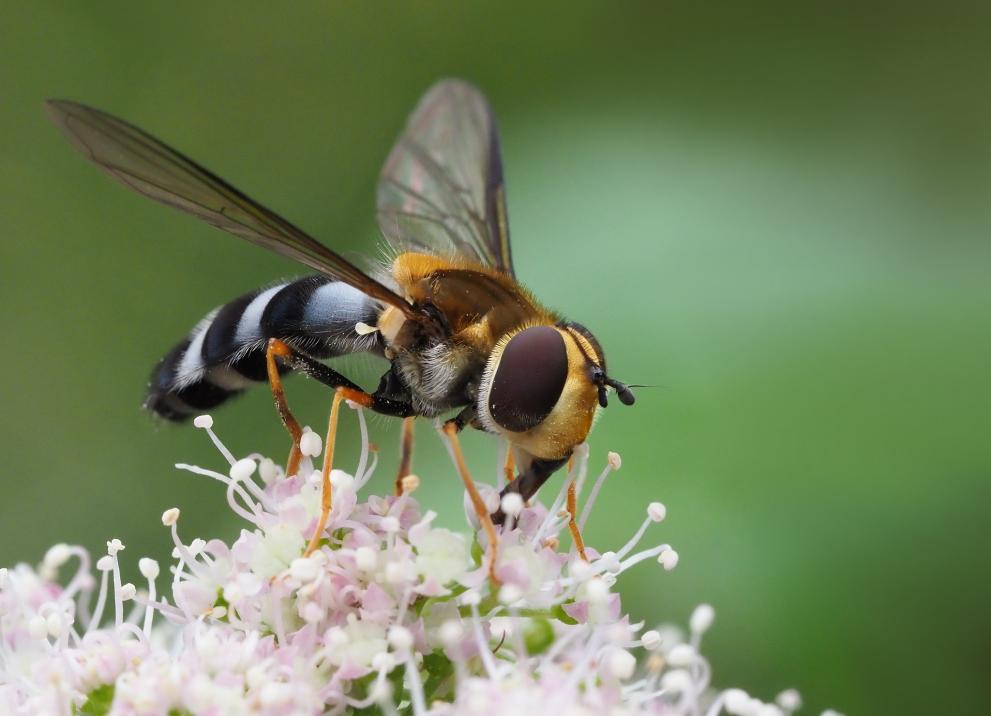
There are already important actions taking place across Europe, with the support of EU funding and EU policies in order to tackle the crisis facing pollinating insects.
Projects taking place in the agricultural and urban landscape are key to tackling the main threats facing these important organisms and many are already taking place throughout many EU Member States, informed by ground-breaking and world leading research from several European research institutes.
Actions in my country
In these country reviews you will find the relevant information and contacts in your and other Member States. This can help you in your work on pollinator conservation or to become a pollinator ambassador yourself.
National strategies and plans
National strategies available for the following countries: Belgium - strategy available in French and Dutch; Germany, Ireland, Finland, France, Luxembourg, Netherlands, Spain
Regions
The EU cohesion policy funds provide an important support to the conservation actions for pollinators, in urban and rural landscapes:
- European Regional Development Fund (ERDF), in particular through European Territorial Cooperation (Interreg)
- Cohesion Fund (CF)
- European Social Fund (ESF)
International Action
The EU supports global pollinator conservation through the 2018-2030 International Initiative by funding a €9 million FAO project in Africa, the Caribbean, and the Pacific to promote ecosystem-based agriculture, preserve natural habitats, and mitigate pesticide risks.
Additionally, it organizes a global seminar to strengthen pesticide regulations for pollinator protection and shares its expertise through the Coalition of the Willing on Pollinators and international events like the regional EPPA workshop.
Species Action Plans
The European Commission has developed Action Plans to conserve pollinator species, providing comprehensive information on their status, ecology, threats, and necessary conservation measures across the EU. In April 2021, the Commission mandated the development of Action Plans for the most threatened pollinator species. Three plans were prepared by the International Union for Conservation of Nature (IUCN), in collaboration with the IUCN Species Survival Commission, the Invertebrate Conservation Committee, the Hoverfly Specialist Group, and Buglife, and published by the Commission in May 2023. These plans were developed through extensive consultations with experts, stakeholders, and Member State authorities, following the IUCN's Guidelines for Species Conservation Planning.
The three Species Action Plans focus on:
- Canarian Islands Pollinators: This plan targets four insect species—two butterflies, one bee, and one hoverfly—that inhabit the Laurel Forest, an ancient ecosystem now threatened by human activity, alien species, and climate change.
- Teasel-Plant Bees: Addressing wild bees at risk due to habitat loss and the decline of teasel plants, their essential resource, primarily caused by agricultural intensification and the reduction of xerothermic grasslands.
- Veteran Trees Hoverflies: Focusing on six hoverfly species reliant on veteran trees and decaying wood, emphasizing the need for forestry practices that preserve these critical habitats.
Additionally, the Commission has supported the development of action plans for the most threatened pollinator habitats, including semi-natural dry grasslands and European dry heaths. Implementation of these plans is supported through the LIFE Programme, with €500,000 earmarked to facilitate coordination efforts.
Get involved
Find suggestions on how you can get involved in the collective fight to tackle pollinator decline in Europe.
- Citizens for pollinator conservation: a practical guidance: Full Guidance and Factsheet
- Managing invasive alien species to protect wild pollinators: Full Guidance and Factsheet
- A guide for pollinator-friendly cities: Full Guidance and Factsheet
- A guide to pollinator-friendly farming: Full Guidance and Factsheet
- Action by the agri-food and beverage sector to protect pollinators: Full Guidance and Factsheet
- Action by the forestry sector to protect pollinators: Full guidance and Factsheet
- Action by the retail sector to protect pollinators: Full Guidance and Factsheet
- Action by the building sector to protect pollinators: Full Guidance and Factsheet
- Action by the landscape architecture sector to protect pollinators: Full Guidance and Factsheet
- Action by the horticulture sector to protect pollinators: Full Guidance and Factsheet
- Action by the energy sector to protect pollinators: Full Guidance and Factsheet
- Action by the extractives sector to protect pollinators: Full Guidance and Factsheet
- Action by the apiculture sector to protect pollinator: Full Guidance and Guidance
- Action by the tourism sector to protect pollinators: Full Guidance and Guidance
